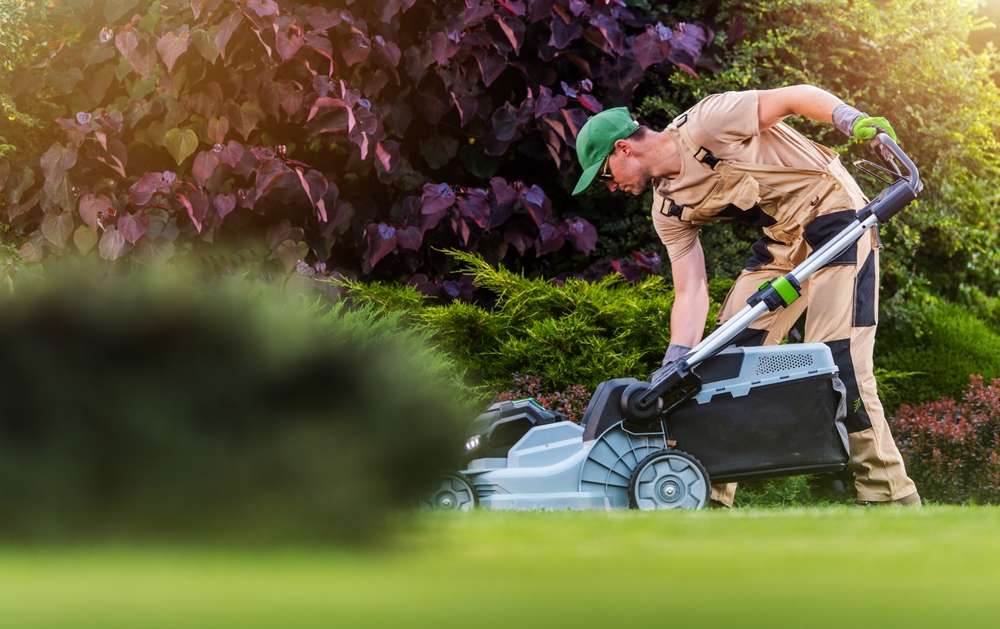Used Lawn Mowers: Selection, Inspection, and Maintenance Guide
Purchasing a secondhand lawn mower offers an economical solution for maintaining your lawn without the hefty price tag of brand-new equipment. The used mower market provides numerous options across different types, sizes, and conditions, making it essential to understand what to look for and how to properly maintain your investment. With proper knowledge about inspection techniques, size matching, and maintenance practices, you can find a reliable used mower that serves your lawn care needs for years to come.

What Types of Lawn Mowers Are Available Second Hand
The used lawn mower market offers several distinct categories to explore. Walk-behind push mowers represent the most common option, available in both gas-powered and electric variants. These manual mowers work well for smaller properties and offer excellent exercise opportunities while maintaining your lawn.
Self-propelled mowers provide easier operation across larger areas, with rear-wheel and front-wheel drive options available secondhand. Riding mowers and lawn tractors dominate the market for larger properties, offering comfort and efficiency for extensive lawn areas. Zero-turn mowers, while less common in the used market, provide exceptional maneuverability around obstacles.
Electric mowers, both corded and battery-powered, are increasingly available as more homeowners upgrade to newer models. Reel mowers, though less common, offer an environmentally friendly option that requires no fuel or electricity.
Key Inspection Points Before Choosing a Used Lawn Mower
Understanding what to inspect before choosing a used lawn mower prevents costly surprises and ensures reliable operation. Start by examining the engine condition, checking for oil leaks, rust, or unusual sounds during operation. Pull the starter cord to assess its responsiveness and listen for smooth engine running without excessive vibration or irregular sounds.
Inspect the cutting deck thoroughly for cracks, excessive wear, or rust damage that could affect performance. Check the blade condition, looking for chips, excessive dullness, or bent edges that indicate impact damage. Examine the wheels and drive system, ensuring smooth rolling and proper engagement of self-propulsion features.
For electric mowers, test the cord for damage and verify battery charge retention in cordless models. Check all safety features, including blade engagement mechanisms and safety guards. Examine the handle and controls for stability and proper operation of height adjustment mechanisms.
Matching Mower Size and Style to Different Lawn Areas
Learning how to match mower size and style to different lawn areas ensures efficient lawn maintenance and optimal results. Properties under half an acre typically work well with walk-behind mowers, either push or self-propelled models with cutting decks between 20-22 inches.
Medium-sized lawns spanning half to one acre benefit from larger walk-behind mowers with 22-inch decks or small riding mowers with 30-42 inch cutting decks. These options provide increased efficiency while remaining maneuverable around landscaping features.
Large properties exceeding one acre require riding mowers or lawn tractors with cutting decks of 42 inches or larger. Zero-turn mowers excel in areas with numerous obstacles, trees, or irregular shapes, despite their typically higher cost.
Consider terrain characteristics when selecting mower types. Hilly areas benefit from rear-wheel drive self-propelled mowers or riding mowers with good traction control. Flat, open areas allow for larger cutting decks and faster operation speeds.
| Mower Type | Typical Used Price Range | Best Lawn Size | Key Features |
|---|---|---|---|
| Push Mower | $75-$200 | Under 0.25 acres | Lightweight, good exercise, low maintenance |
| Self-Propelled | $150-$400 | 0.25-0.75 acres | Easier operation, variable speed control |
| Riding Mower | $500-$2,500 | 0.75-3 acres | Comfortable seating, larger cutting decks |
| Zero-Turn | $1,500-$8,000 | 1+ acres | Superior maneuverability, faster cutting |
Prices, rates, or cost estimates mentioned in this article are based on the latest available information but may change over time. Independent research is advised before making financial decisions.
Simple Upkeep Steps for Extending Mower Usability
Discovering simple upkeep steps for extending mower usability maximizes your investment and ensures consistent performance. Regular oil changes form the foundation of engine maintenance, typically required every 25-50 hours of operation or at the beginning of each season.
Keep the air filter clean by removing debris and washing foam filters or replacing paper filters as needed. A clogged air filter reduces engine performance and increases fuel consumption significantly.
Maintain sharp blades through regular sharpening or replacement, as dull blades tear grass rather than cutting cleanly, leading to lawn stress and disease susceptibility. Clean the cutting deck after each use to prevent grass buildup that can cause corrosion and affect cutting performance.
Store your mower properly during off-seasons by draining fuel or adding fuel stabilizer, changing oil, and storing in a dry location. For electric mowers, maintain battery health by following proper charging procedures and storing batteries in moderate temperatures.
Regular maintenance checks should include inspecting belts for wear, lubricating moving parts, and checking tire pressure on riding mowers. These simple steps prevent major repairs and extend equipment life significantly.
Purchasing and maintaining a used lawn mower requires careful consideration of type, thorough inspection, proper sizing, and consistent maintenance practices. By understanding the available options in the secondhand market and implementing proper care procedures, you can enjoy reliable lawn care equipment at a fraction of new equipment costs. Regular maintenance not only extends mower life but also ensures optimal lawn care results throughout the growing season.




